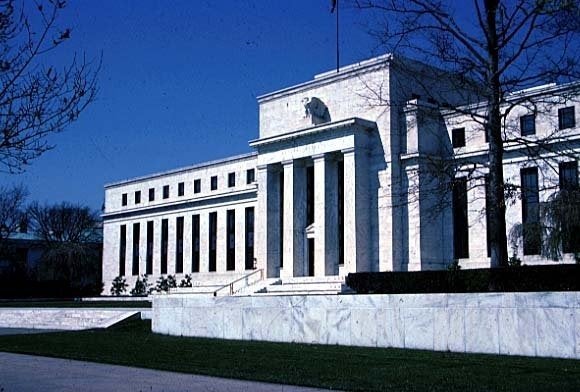
NEW YORK -- For the lucky few on Wall Street, the Federal Reserve sure was sweet.
Nine firms -- five of them foreign -- were able to borrow between $5.2 billion and $6.2 billion in U.S. government securities, which effectively act like cash on Wall Street, for four-week intervals while paying one-time fees that amounted to the minuscule rate of 0.0078 percent.
That is not a typo.
On 33 separate transactions, the lucky nine were able to borrow billions as part of a crisis-era Fed program that lent the securities, known as Treasuries, for 28-day chunks to the now-18 firms known as primary dealers that are empowered to trade with the Federal Reserve Bank of New York. The program, called the Term Securities Lending Facility, ensured that the firms had cash on hand to lend, invest and trade.
The market was freezing up. Effectively free money, courtesy of Uncle Sam, helped it thaw.
The European firms -- Credit Suisse (Switzerland), Deutsche Bank (Germany), Royal Bank of Scotland (U.K.), Barclays (U.K.), and BNP Paribas (France) -- borrowed $5.2-6.2 billion in Treasuries 20 different times. The one-time fees they paid on each transaction ranged from $403,277.78 to $481,110. Deutsche led the way with seven such deals.
On each transaction, the fee paid for the 28-day loan is equal to a rate of just 0.0078 percent.
The first of these sweetheart deals began April 17, 2008. They ended nearly a year later on March 5. On that day, Goldman Sachs borrowed about $5.8 billion and paid just $450,000 for the privilege.
Goldman was one of four American firms that also paid that rock-bottom rate. Citigroup, defunct investment bank Lehman Brothers, and Merrill Lynch, which was gobbled up by Bank of America in a government-pushed transaction, benefited from the save-Wall-Street-at-all-costs approach. Goldman and Citi got the 0.0078 percent rate on five separate occasions, tops among U.S. banks.
The transactions highlight the extraordinary steps taken by the Fed -- and encouraged by both the Bush and Obama administrations -- to save Wall Street from its own mistakes. Households and small businesses have not been as lucky.
The Fed's crisis-era programs "provided liquidity to particular institutions whose disorderly failure could have severely stressed an already fragile financial system," the Fed said in a statement Wednesday posted on its website. A spokesman did not respond to an e-mailed request for comment.
This year, Wall Street is poised to break yet another record for employee compensation and bonuses. Thanks to near-zero percent interest rates -- also set by the Fed -- firms are able to continue making easy money with minimal risk.
*This story was updated at 8:30 p.m. ET. An earlier version of this article misstated the rate paid by the firms, the number of transactions, the amount of the fee, which varied by transaction, and incorrectly defined the rate itself. The rate, which was a fixed fee and not a traditional interest rate, was 0.0078 percent, not 0.0077 percent. There were at least 33 such transactions, not 31. And the actual fee paid ranged from $403,000 to $481,000, rather than a fee of about $384,000 for all of the transactions.
*************************
Shahien Nasiripour is the business reporter for The Huffington Post. You can send him an e-mail; bookmark his page; subscribe to his RSS feed; follow him on Twitter; friend him on Facebook; become a fan; and/or get e-mail alerts when he reports the latest news. He can be reached at 646-274-2455.
